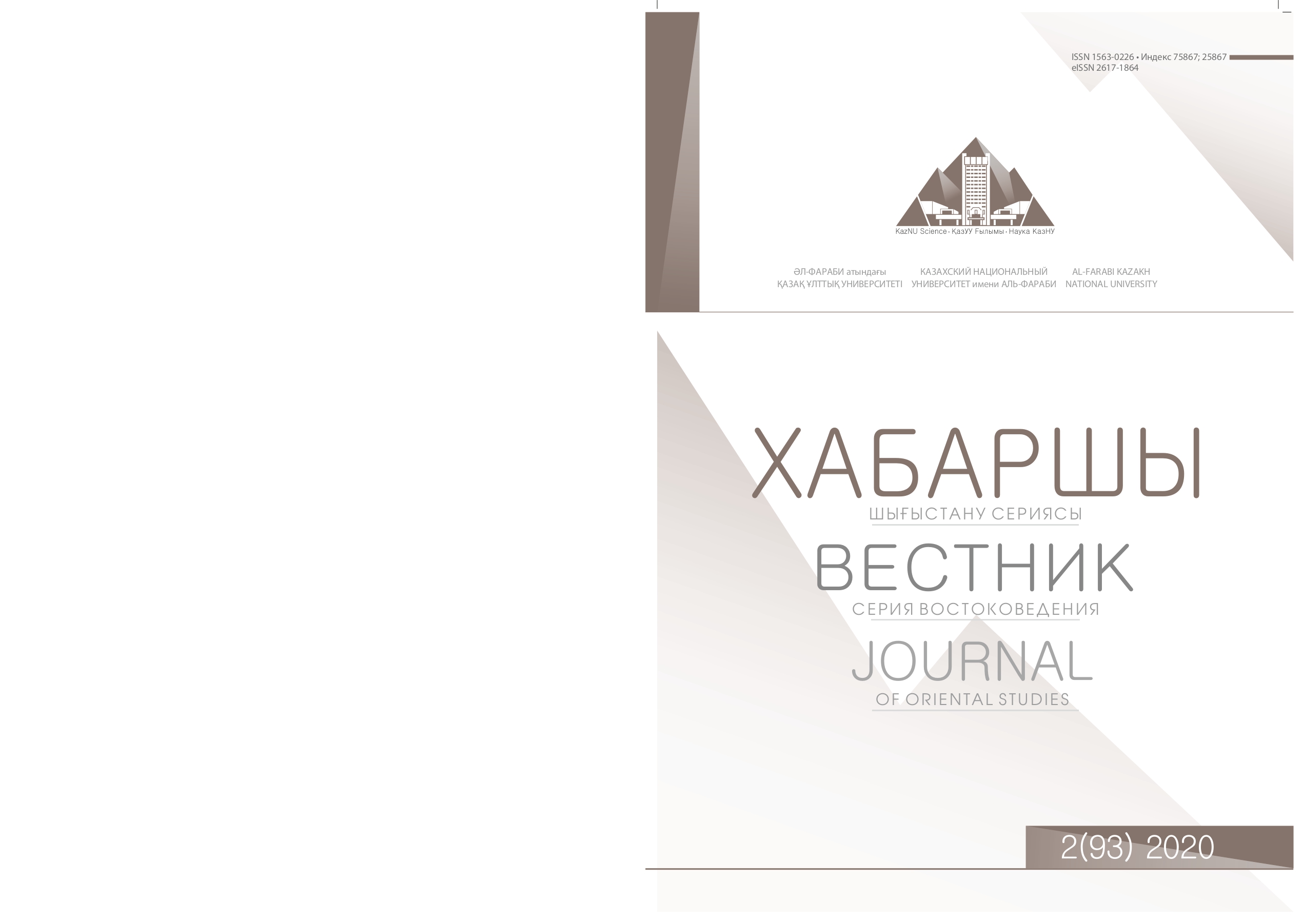Concept of “relative relations” in the kazakh and arabic paremies
DOI:
https://doi.org/10.26577/JOS.2020.v93.i2.13Abstract
Each nation forms its vocabulary inherent in its environment. From the characteristics and development of economic, social, cultural life are formed an attitude and a cultural-social worldview, as a result of which wise laconic folk sayings appear in the language. Such sayings include proverbs and sayings. These wise words are not only a product of one time or period, they are the fruit of the historical development of the thinking of an entire nation. Undoubtedly, how many languages in the world, as many treasuries of proverbs and sayings. Despite the fact that humanity speaks different languages, sometimes in the languages of different nations there are paremias close in meaning. Those close in meaning are mainly found in paremias regarding human relations. One of the points of this relationship is kinship. Family relations are formed in the family and under the influence of external factors (for exammple marriage). The concept of “kinship” is made up of cognitives, like father, mother, child, grandfather, grandmother, relatives, grandson, nephew, relatives of the wife and husband, etc. In the Kazakh and Arabic languages there are many parodies reflecting the relationship between father and children, mother and daughter, mother-in-law and bride, nephew and uncle / aunt, son-in-law and relatives of the wife. The article is devoted to conduct a comprehensive comparative study of these language units in the conceptual-semantic and ethnocultural aspects. It will be analyzed the semantic components of paremias, and will be revealed the differences and similarities of these concepts. Translating concepts reflecting kinship in the Arabic language, we have the opportunity to compare them with paremias in the Kazakh language and to understand the worldview and psychology of the Arab peoples. Key words: Kazakh paremias, Arabic paremias, relatives, metaphor, concept, saying, cognitive theme.




